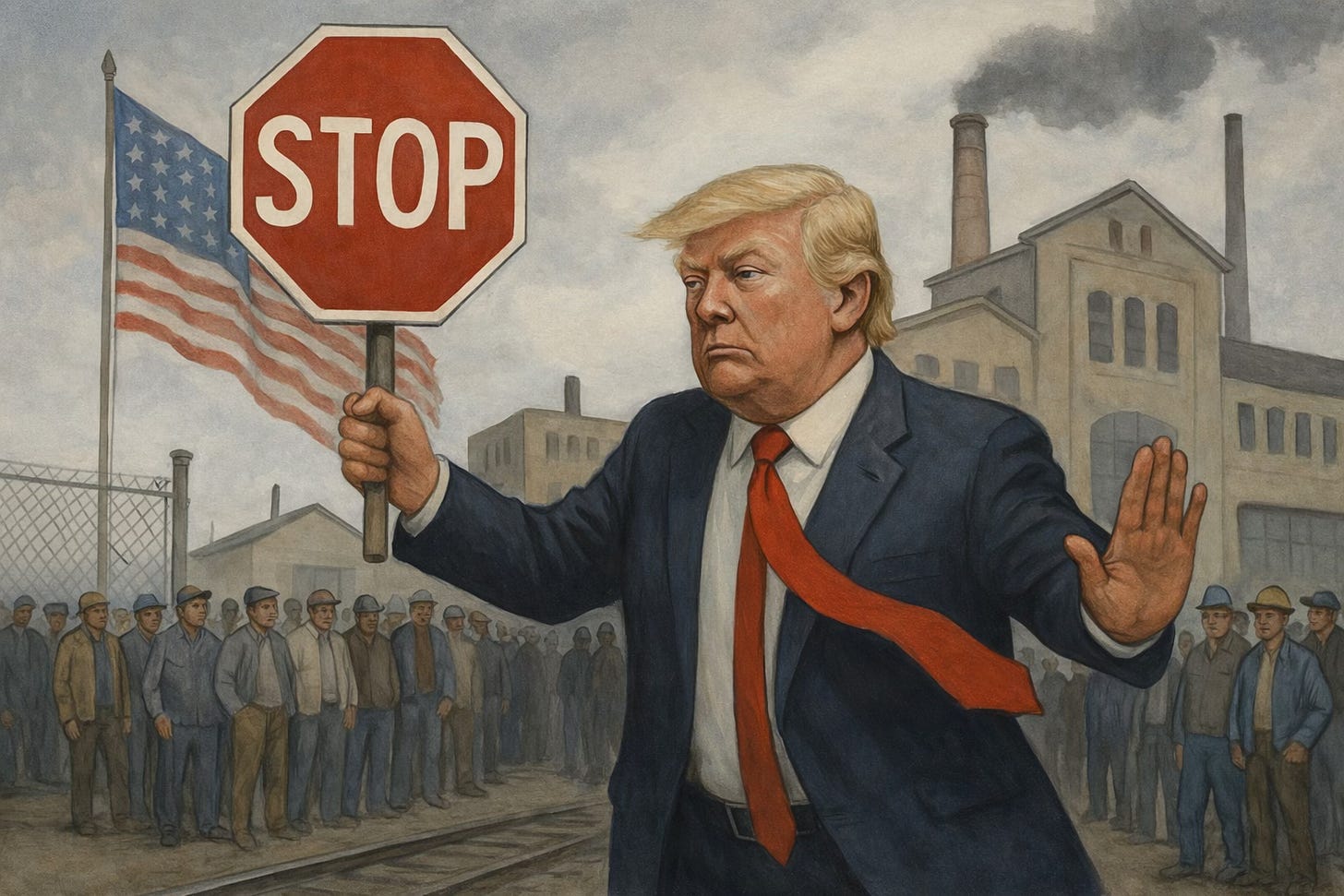Policy First, Jobs Second
Hiring cools as Trump’s policies reshape the labor market.
The hiring pause is policy.
Tariffs went up, worksite raids returned, rates stayed sticky. HR adjusted. About one in five big employers plans to slow hiring in H2 2025, roughly double last year’s share.
Data first:
CHRO hiring index 54 in Q2 (59 a year ago).
Average unemployment spell 24.1 weeks.
Long-term unemployed 1.8 million (24.9% of jobless).
Baseline tariffs 10% since April 5; 15% being floated in U.S.–EU talks.
Immigration enforcement rising.
Railroads hitting record output per worker after trims.
Banks down ~1,500 year to date while still promising ~2,000 campus hires.
Enforcement moved. Actual warehouses and fields, not memos. New Jersey this week, agriculture last month. Any sector running on seasonal labor or thin margins just saw operating risk go up. Managers won’t say it on TV; schedules show it.
The easiest headcount to cut is the vacancy you never backfill. Paycom leans on automation and rethinks backfills. Nexxen talks do more with the team we have. Meta cooled the AI hiring surge after scooping up dozens of researchers. Novo Nordisk paused non-critical roles as GLP-1 economics met competition and margin math.
Call it what it is. Import costs rise, pass-through lags, prices reset as old stock clears. With 10% in place and 15% on the table, firms slow requisitions and raise workloads for existing teams. Manufacturing and logistics take it first. Ad-tech and SaaS feel it through clients who re-prioritize. Immigration crackdowns compound it, raising unit costs and disrupting timetables.
Money isn’t cheap. Balance sheets built on 1 to 3 percent debt now face hurdle rates that start with a five. AI and workflow tooling offset part of the cost, not all. Union Pacific cut headcount around 3 percent and still reported record productivity per worker. Bank of America talked up leaner staffing while keeping a 2,000 early-career pipeline. Fewer roles, higher output.
What comes next is straightforward. First the freeze. Then the restructure. If Q3 and Q4 margins get clipped by tariff pass-through and flat volumes, guidance will trigger the cuts HR avoided. Not 2008. Closer to 2015 to 2016, amplified by policy.


